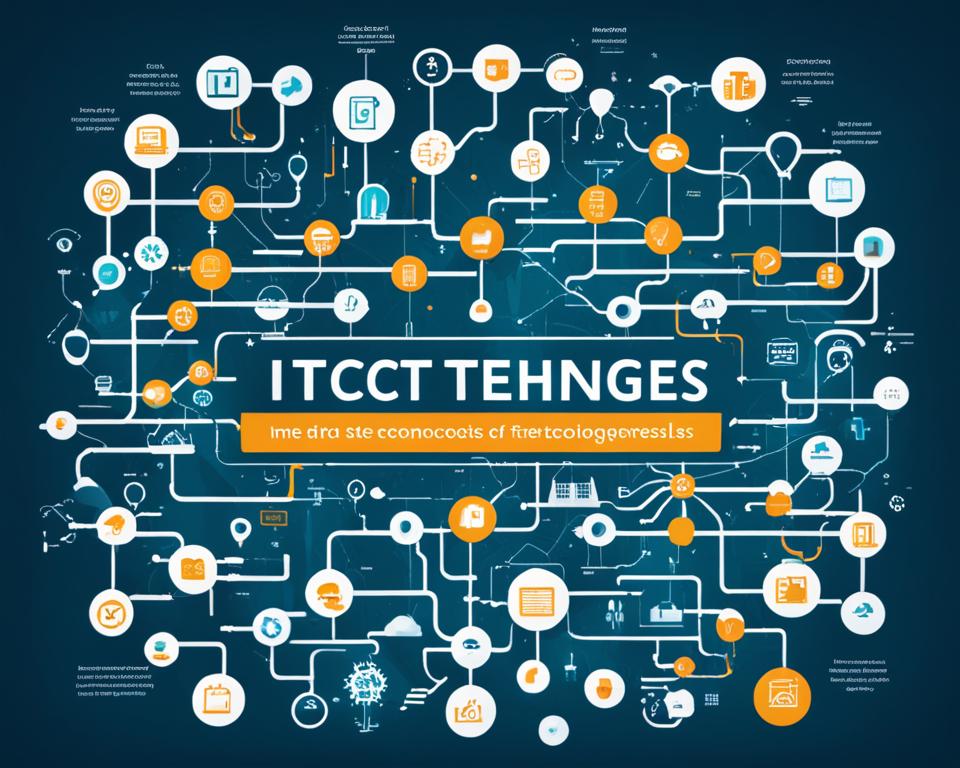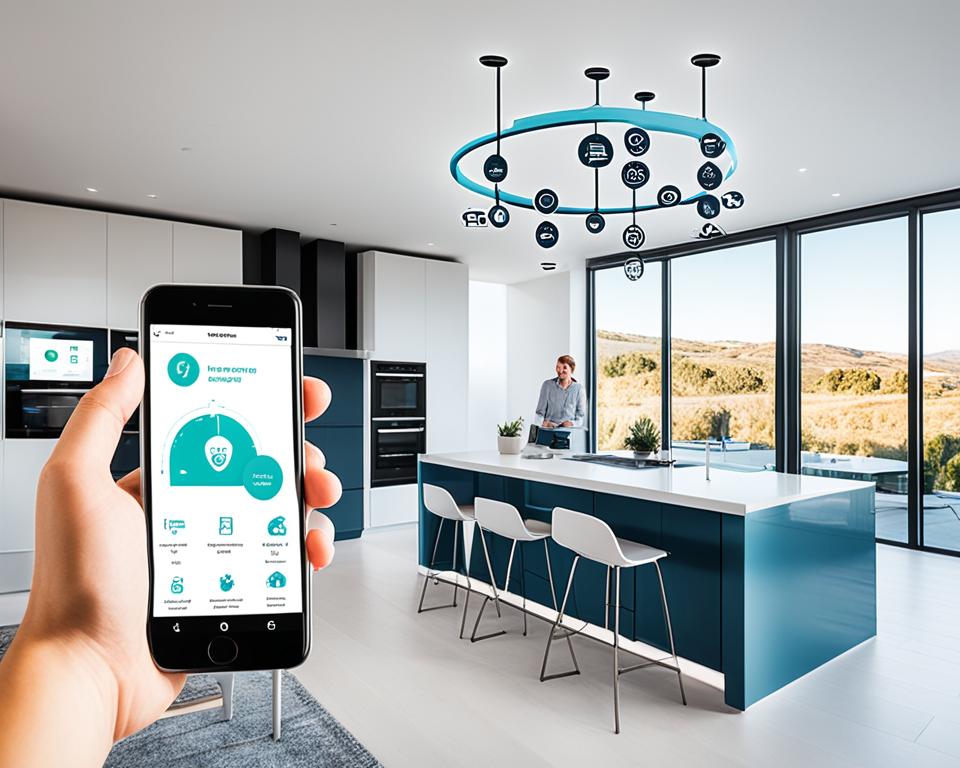Adverts
A Internet of Things (IoT) is a technology that is revolutionizing the way we connect and interact with the world around us. At the Brazil, to the IoT networks are expanding rapidly, bringing countless possibilities for connectivity and transforming the way we live, work and relate.
Adverts
A IoT It is changing the daily lives of people and companies, optimizing processes, reducing costs and creating intelligent solutions for cities. With the IoT technology, several devices can be connected to the internet, allowing control, communication and the interaction between them. That connectivity drives the emergence of innovative applications in areas such as healthcare, agriculture, manufacturing and more.
And with the arrival of 5G technology, expected to be implemented soon in Brazil, to the IoT networks will have even more possibilities for expansion and applications. The speed and capacity of 5G will boost connectivity, allowing the development of even more advanced and complex solutions.
Main Conclusions:
Adverts
- To the IoT networks are expanding rapidly in Brazil, bringing countless possibilities for connectivity and transforming the way we live and work.
- A IoT optimizes processes, reduces costs and creates intelligent solutions for cities.
- 5G will further boost the expansion and applications of IoT networks in Brazil.
- IoT brings countless opportunities to diverse areas, such as healthcare, agriculture, manufacturing and much more.
- It is important to face the challenges of implementing IoT, such as information security and the adaptation of infrastructure, to guarantee a more connected, intelligent and sustainable future.
What is the Internet of Things?
A Internet of Things (IoT) refers to connecting everyday devices to the internet, allowing them to communicate and interact with each other. These devices can range from household appliances, applications to cars. IoT uses technologies such as WiFi It is bluetooth to connect these devices to a network, allowing access to information stored in cloud. The goal of IoT is to create an environment where any device can provide information and communicate with others connected devices to him. This connection between devices enables a series of innovative applications and services that improve efficiency and practicality in the daily lives of people and companies.
A Internet of Things (IoT) revolutionizes the way we interact with the world around us, connecting common devices to the internet and enabling communication between them. With the continuous advancement of technology, more and more devices are being connected to the internet, creating an interconnected digital ecosystem. IoT devices are capable of collecting and transmitting data, enabling automated actions and intelligent decision-making.
You connected devices of IoT use a variety of technologies communication, as WiFi It is bluetooth, to establish wireless connections. They can communicate with each other directly or through a network, enabling integration and the exchange of information. This communication between devices is essential to make the most of the Internet of Things.
Furthermore, IoT uses the cloud computing to store and process data collected by devices. A cloud allows access to data from anywhere and at any time, offering scalability and flexibility for IoT infrastructure. You IP addresses They are used to identify each device connected to the internet and establish connections between them.
The Internet of Things has a wide range of applications and benefits. It enables the task automation, remote monitoring, process optimization and the creation of intelligent solutions. With IoT, it is possible to transform the way we live and work, making our lives more convenient, efficient and safe.
Importance of the Internet of Things
The Internet of Things (IoT) plays a fundamental role in digital transformation, allowing the access to information in real time and process automation. This revolutionary technology connects devices to the internet, enabling companies and people to have access to relevant data to make assertive decisions and streamline their daily operations.
One of the main advantages of IoT and the cost reduction, as it is capable of optimizing processes and ensuring greater efficiency in business operations. Furthermore, IoT makes it possible to improving quality of life, positively impacting areas such as health, agriculture and logistics.
According to IoT Snapshot 2022 study, approximately 57% of Brazilian companies have already adopted IoT solutions in their businesses. This percentage tends to increase in the coming years, as more devices are connected to the internet.
| Advantages of IoT | Disadvantages of IoT |
|---|---|
| Cost reduction | Information security |
| Process automation | Privacy |
| Improved data analysis | Environmental impact |
| Increased productivity | |
| Business innovation |
IoT drives business innovation, enabling the development of new products and services that meet the demands of the current market. It also plays a fundamental role in the creation of smart cities, where integration smart of devices connected to the internet improves the quality of life of citizens.
The Internet of Things is shaping the future of technology and the country. As more devices become connected and technology advances, IoT will continue to transform the way we live and work, enabling a more connected, efficient and intelligent world.
Technologies that make the Internet of Things possible
Several technologies enable the Internet of Things to work. The main elements are the sensors, responsible for collecting data from devices and transforming it into useful information. In addition connectivity is essential to ensure the efficient functioning of the IoT network, with options such as WiFi, bluetooth and others. O machine learning It is used to automate processes and obtain more accurate results.
A cloud computing is responsible for storing and processing data, allowing access to this information from any device. Finally, the artificial intelligence complements IoT, allowing computers to learn from previous experiences and assist people in using devices.

These technologies are the basis for the development and expansion of IoT networks, allowing devices to connect and interact, providing countless applications and benefits for companies and users.
Advantages and disadvantages of the Internet of Things
The Internet of Things (IoT) offers a series of advantages that can bring significant benefits to people and companies. Among the main advantages of IoT, the following stand out:
- Cost reduction: IoT allows you to optimize processes, reducing operational costs and increasing efficiency.
- Task automation: With IoT, it is possible to automate repetitive tasks, freeing up time and resources for other activities.
- Improved data analysis: IoT collects and processes large volumes of data, providing valuable information for analysis and more assertive decision-making.
- Increased productivity: The automation and connectivity provided by IoT can increase the productivity of employees and companies as a whole.
However, it is also important to consider the disadvantages of IoT, so that appropriate risk mitigation measures are taken. Some disadvantages of IoT include:
- Information security: IoT creates new challenges in relation to information security, increasing the risks of intrusions and leaks of sensitive data.
- Privacy: With IoT, there is greater collection of personal data, which can affect the privacy of users if adequate protection measures are not adopted.
- Environmental impact: The production and disposal of IoT-oriented electronic devices can cause negative environmental impacts, such as an increase in electronic waste.
It is important that companies and users are aware of these advantages and disadvantages of IoT when adopting this technology in order to maximize the benefits and minimize the risks involved.
Examples of using the Internet of Things in everyday life
The Internet of Things (IoT) is increasingly present in our daily lives, providing practicality, automation and innovation. In this section, we will explore some examples of how IoT is applied in different areas, from wearables until smart cities.
1. Wearables: Smart watches (smartwatches)
You smartwatches are popular examples of devices wearables who use the IoT technology. In addition to displaying the time and monitoring heart rate, these devices can collect data about users' health, such as sleep quality, physical activity levels and calories burned. This information can be synced with smartphone apps, allowing you to track and adjust your health habits.
2. Smart Home
Smart homes are an example of how IoT can transform the home environment. Across connected devices, such as lamps, thermostats, security cameras and household appliances, it is possible to control different aspects of the home through apps or voice commands. With IoT, you can turn on the lights before you get home, regulate the room temperature or even program the coffee machine to prepare a hot cup in the morning.
3. Connected Car
Connected cars are an example of how IoT is present in the automotive industry. These vehicles have advanced features such as voice assistance, route optimization, advanced safety systems, and even integration with mobile devices. Common connected car, you can receive real-time navigation instructions, receive traffic alerts and even activate the door unlock system remotely.
4. Smart Cities
IoT is also applied in smart cities, which use sensors, cameras and connected devices to optimize public services, monitor air quality, improve traffic and provide greater security. These smart solutions improve citizens' quality of life, making cities more efficient and sustainable.
5. Drones
You drones are an example of how IoT is revolutionizing industry and entertainment. These flying devices can be controlled remotely, which makes it possible to capture aerial images, monitor difficult-to-access areas, deliver goods and even assist in rescue missions.
6. Smart TVs
To the smart TVs are examples of how IoT is transforming the way we consume audiovisual content. These televisions have an internet connection and offer access to streaming applications, such as Netflix and Amazon Prime Video, in addition to allowing integration with mobile devices and voice assistants. With a smart TV, you can watch your favorite films and series in a practical and immersive way.
The Internet of Things offers a multitude of possibilities and applications that make our lives more connected and intelligent. These examples are just a small sample of the potential of IoT. As technology evolves, we can expect even more innovations and creative solutions that will surprise us.

| Example | Description |
|---|---|
| Wearables | Smart watches (smartwatches) that collect data on users' health. |
| Smart home | Systems that allow you to control appliances and devices through applications or voice commands. |
| Connected Car | Vehicles with advanced features such as voice assistance, route optimization and safety systems. |
| Smart Cities | Projects that use sensors and connected devices to improve public services and quality of life. |
| Drones | Remotely controlled flying devices, used in areas such as monitoring and deliveries. |
| Smart TVs | Internet-connected televisions that offer access to streaming applications and integration with mobile devices. |
Conclusion
The Internet of Things is revolutionizing the way we live and how we connect with the world around us. In Brazil, we are witnessing a rapid expansion of IoT networks, driven by technological advances and the imminent arrival of 5G. This new generation of connectivity will present new opportunities and challenges for companies, governments and society as a whole.
O future of IoT networks is promising, with a multitude of innovative and complex applications emerging every day. From home automation to intelligent city management, the possibilities are vast and will have a significant impact on several sectors. In addition expansion of the Internet of Things promises to improve people's quality of life, making our homes more efficient, our transport safer and our cities more sustainable.
However, to realize the full potential of IoT, it is crucial that we overcome implementation challenges. Information security and data protection privacy of users are fundamental aspects that must be addressed effectively. Furthermore, the infrastructure needs to be adapted and improved to support the expansion of IoT, allowing a stable and agile connection in all regions of the country.
With the continuous development of IoT networks, it is essential that we are prepared to embrace the opportunities that will arise. Technology is evolving quickly and it is up to us to keep up with trends, invest in training and encourage collaboration between everyone involved. This way, we can build a more connected, intelligent and sustainable future for Brazil.
